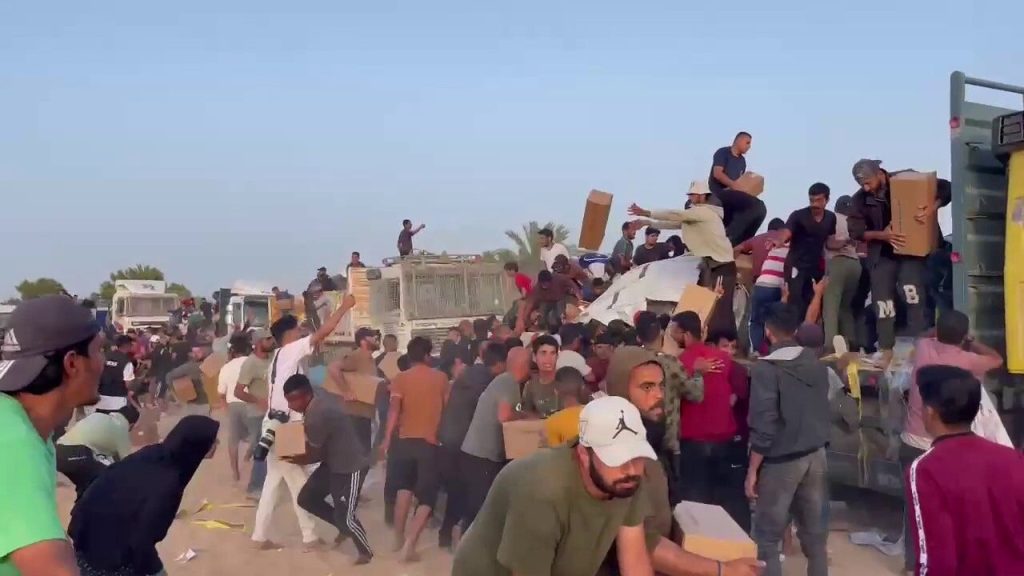Hundreds of Palestinians in Gaza looted an aid convoy, highlighting the disorganized distribution of aid in the region. The U.S. has spent $350 million on a pier in the Mediterranean to facilitate aid delivery to Gaza but none of the 569 metric tons transferred via the pier has reached Palestinians. Pentagon Press Secretary Maj. Gen. Pat Ryder confirmed this, noting that aid had been transferred but not yet delivered. Despite air drops and land crossings, none of the aid had reached Gaza as of the statement.
The situation has raised concerns regarding the effectiveness of the aid distribution in Gaza. Crowds have swarmed multiple aid caravans, preventing them from reaching their destinations. U.N. spokesman Stephane Dujarric acknowledged the issue of self-distribution, where Palestinians resorted to taking aid for fear of never seeing it. The U.N.’s World Food Program is looking into new aid routes to ensure that aid reaches those in need in Gaza, addressing the challenges posed by the current distribution system.
The U.S. military’s construction of the pier in Gaza is part of President Biden’s efforts to deliver aid to the region, but the lack of deliveries has fuelled growing controversy. The aid blockage has raised questions about the cost and security implications of the pier construction. Assistance from the U.S. and other countries is crucial for alleviating the suffering in Gaza, but the challenges in distributing the aid have become a point of concern.
The Pentagon has emphasized the aid that has been transferred into Gaza, despite none of it reaching the intended recipients as of the latest reports. The promises of aid delivery have not materialized, adding to the frustration of those in Gaza who are in urgent need of assistance. The lack of progress in distributing the aid has led to increased scrutiny and calls for more transparent and effective distribution mechanisms.
Efforts to address the aid blockage in Gaza are now underway, with discussions on new aid routes and methods to ensure that assistance reaches those who need it most. The need for aid in Gaza remains critical, with the ongoing humanitarian crisis exacerbated by the lack of effective distribution channels. As international efforts continue to support Gaza, the focus is on overcoming the challenges in delivering aid to those who depend on it for their survival and well-being.
The situation in Gaza underscores the complexities and challenges involved in providing humanitarian aid to conflict-affected regions. The need for coordinated and efficient distribution mechanisms is evident, as aid agencies and governments work to meet the demands of those in crisis. The ongoing efforts to overcome the obstacles in aid delivery in Gaza reflect a broader commitment to addressing the humanitarian needs of vulnerable populations and ensuring that assistance reaches those who need it most.


